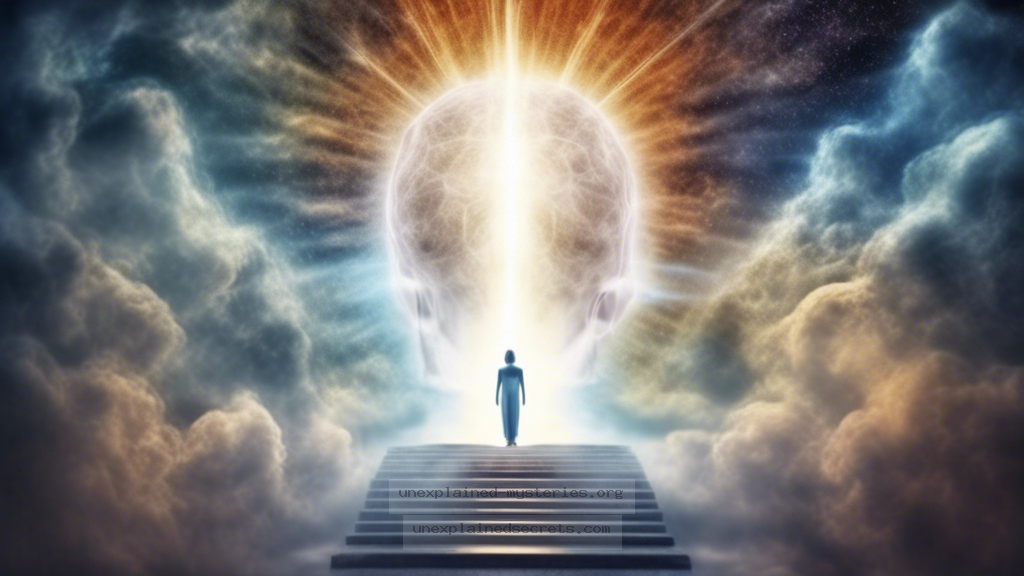What Can Near-Death Experiences Reveal About Consciousness After Clinical Death?
What Can Near-Death Experiences Reveal About Consciousness After Clinical Death?
The phenomenon of Near-Death Experiences (NDEs) has captivated both scientific and spiritual communities for decades. As people recount experiences of floating above their bodies, encountering deceased relatives, or even moving through tunnels of light, a compelling question arises: what can these experiences reveal about consciousness after clinical death? This inquiry not only delves into the nature of human consciousness but also challenges our understanding of life, death, and what may lie beyond.
The Significance of the Question
Understanding NDEs is crucial because they offer insights into one of humanity’s oldest questions: what happens after we die? With advances in medical technology, more people are surviving clinical death than ever before, leading to a growing body of anecdotal evidence regarding NDEs. These profound experiences can change lives, influence beliefs, and even affect the way individuals approach their mortality. The implications stretch beyond personal meaning; they challenge our fundamental understanding of consciousness itself.
A Brief History of Near-Death Experiences
NDEs have been reported throughout history, with accounts dating back thousands of years. Ancient texts from cultures around the world, including the Tibetan Book of the Dead and accounts in Egyptian mythology, describe experiences akin to modern-day NDEs. However, it wasn’t until the late 20th century that NDEs gained significant attention in the scientific community. Dr. Raymond Moody’s 1975 book, “Life After Life,” popularized the term and brought awareness to the phenomenon. Since then, a plethora of studies have documented NDEs, further fueling interest and investigation.
Core Concepts of Near-Death Experiences
Near-Death Experiences are often characterized by several common elements. These may include:
- Out-of-body experiences (OBEs): A feeling of floating outside one’s body.
- Intense feelings of peace or joy.
- Encountering a bright light or tunnel.
- Meeting deceased loved ones or spiritual beings.
- Life review: Witnessing significant life events.
These elements are not universally experienced, but they appear frequently enough to suggest a common thread among NDEs. Each account contributes to a broader understanding of the human experience at the brink of death and raises questions about the nature of consciousness.
Evidence Supporting Consciousness Beyond Clinical Death
One of the most compelling aspects of NDEs is the consistency of reports across different cultures and backgrounds. Studies conducted by researchers such as Dr. Pim van Lommel, a Dutch cardiologist, have shown that patients who experience NDEs often display a profound transformation in their psychological outlook and spirituality. For instance, patients report decreased fear of death and an increased appreciation for life following their NDEs.
In a landmark study published in the journal “Resuscitation,” van Lommel examined the NDEs of cardiac arrest survivors. Out of 344 patients, 18% reported having an NDE, with many describing vivid and transformative experiences. This suggests that consciousness may persist even when brain activity has ceased, challenging the traditional view of consciousness as a mere byproduct of brain function.
Alternative Perspectives on NDEs
While many view NDEs as evidence of consciousness beyond death, skeptics argue that these experiences can be explained by physiological and psychological factors. Some theories suggest that NDEs result from brain chemical reactions during near-death moments, such as the release of endorphins or a lack of oxygen. Others propose that the experiences may be a form of hallucination or an elaborate coping mechanism for individuals facing death.
For instance, Dr. Susan Blackmore, a psychologist and NDE researcher, argues that these experiences can be explained through the lens of neuroscience and psychology, indicating that the brain may create vivid hallucinations as a response to extreme stress or trauma. This perspective emphasizes the need for a cautious approach to interpreting NDEs, as not all experiences may reflect a spiritual reality.
Common Misconceptions About NDEs
Despite increasing interest in NDEs, several misconceptions persist. Here are a few notable ones:
- All NDEs are positive: While many report feelings of peace or joy, some NDEs are distressing, involving themes of fear or hellish imagery.
- NDEs are universally the same: Cultural backgrounds can shape the interpretation and content of NDEs, leading to diverse experiences.
- They prove an afterlife: While NDEs are compelling, they do not definitively prove the existence of an afterlife; rather, they challenge our understanding of consciousness.
Best Practices for Investigating Near-Death Experiences
For individuals interested in studying NDEs, a multidisciplinary approach is essential. Here are some best practices:
- Engage with diverse perspectives: Explore both scientific and spiritual interpretations to gain a holistic view.
- Conduct interviews: Collect firsthand accounts from NDE survivors to gather qualitative data.
- Stay updated: Follow ongoing research in fields like neuroscience, psychology, and spirituality to understand evolving theories.
- Be open-minded: Acknowledge personal biases and remain open to various explanations.
Key Point: NDEs are complex phenomena that require careful consideration of both subjective experiences and objective scientific inquiry.
Future Developments in NDE Research
As technology advances, the study of NDEs will likely evolve. Researchers are now using brain imaging techniques to explore consciousness during moments of clinical death. Studies involving near-death patients may provide new insights into brain function and consciousness, potentially validating or redefining existing theories about NDEs.
Moreover, interdisciplinary collaboration between scientists, theologians, and philosophers may foster a deeper understanding of what NDEs reveal about consciousness and spirituality. Some researchers are also exploring how NDEs can inform end-of-life care, offering valuable insights for healthcare professionals.
Conclusion: The Ongoing Mystery of Consciousness
Near-Death Experiences continue to challenge our understanding of consciousness and what lies beyond the threshold of clinical death. While the scientific community remains divided on interpretations of these experiences, the consistency and transformative effects of NDEs cannot be ignored. They invite us to contemplate profound questions about life, death, and the nature of existence itself. As research progresses, we may inch closer to understanding whether consciousness truly transcends physical demise or if these experiences merely reflect the intricacies of the human mind under duress.
Final Thought: The mystery of NDEs serves as a reminder that our understanding of consciousness is still in its infancy. Whether viewed through a spiritual lens or a scientific one, the exploration of NDEs may hold the keys to unlocking one of humanity’s greatest enigmas.
Other Articles
Recent Posts
- What Happened to Flight MH370? The Conspiracy Theories That Still Haunt Us
- What Secrets Lurk Within the Walls of the Infamous Trans-Allegheny Lunatic Asylum?
- What Evidence Supports the Existence of Bigfoot in the Pacific Northwest?
- What Happened to the Indus Valley Civilization? Unraveling the Mysteries of Ancient Urban Life
- Can Telepathy Be Scientifically Proven Through Laboratory Evidence?







